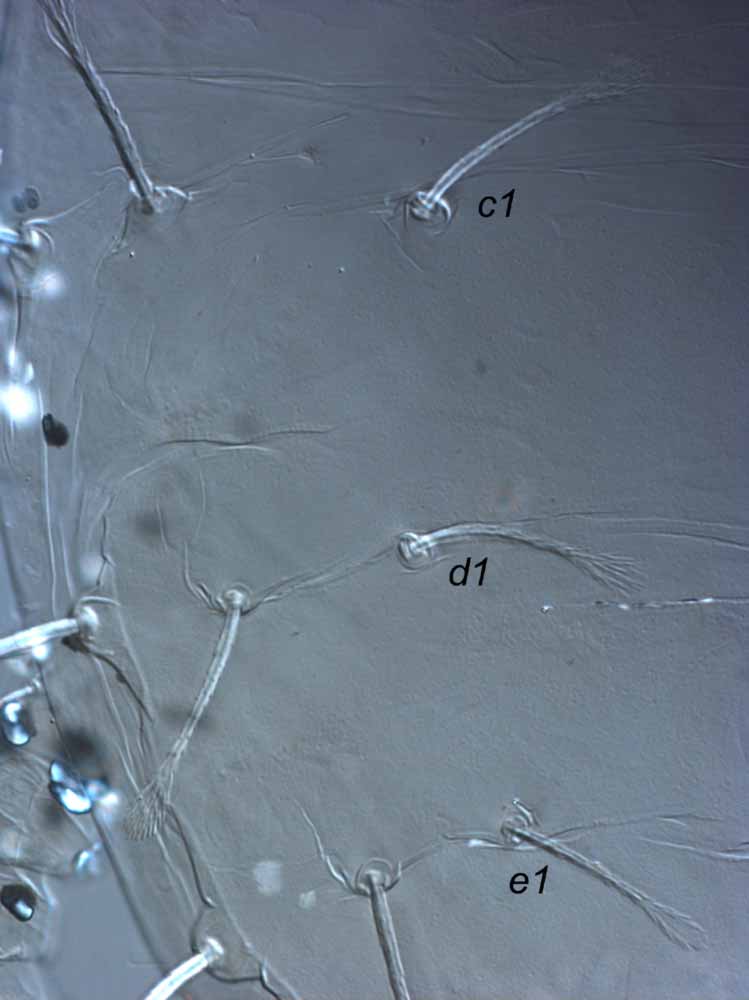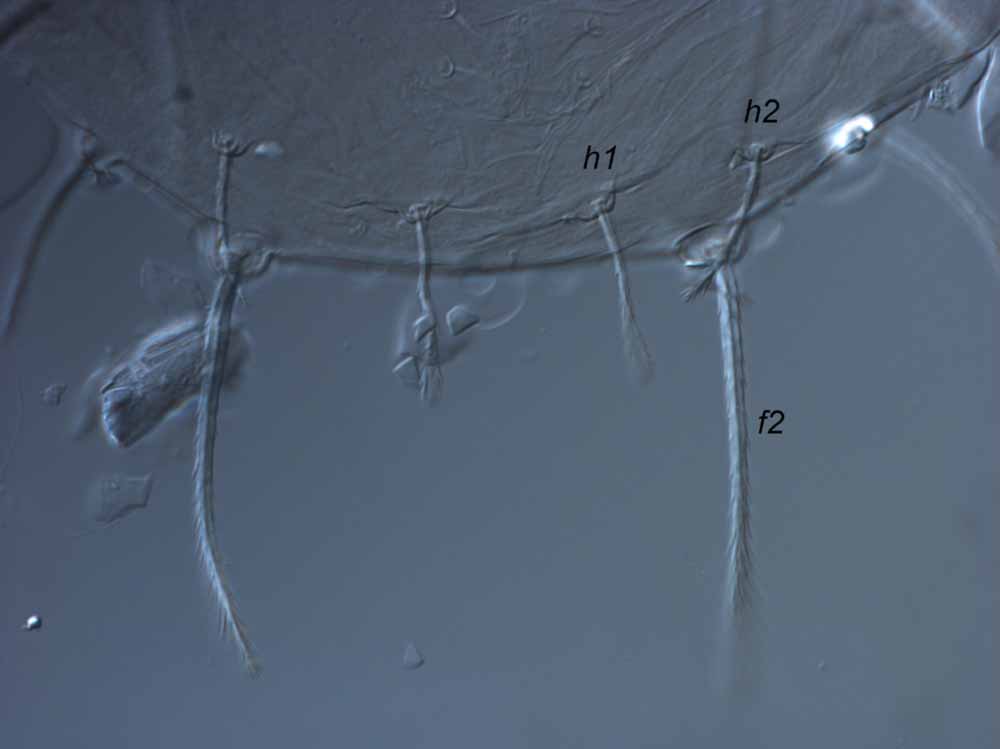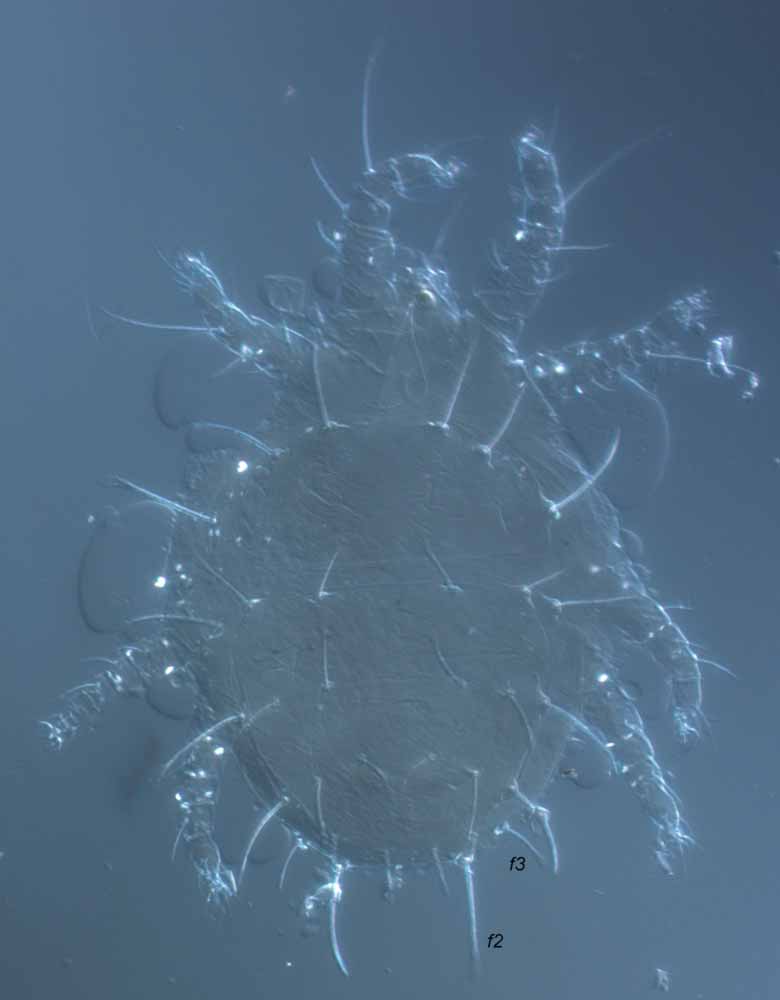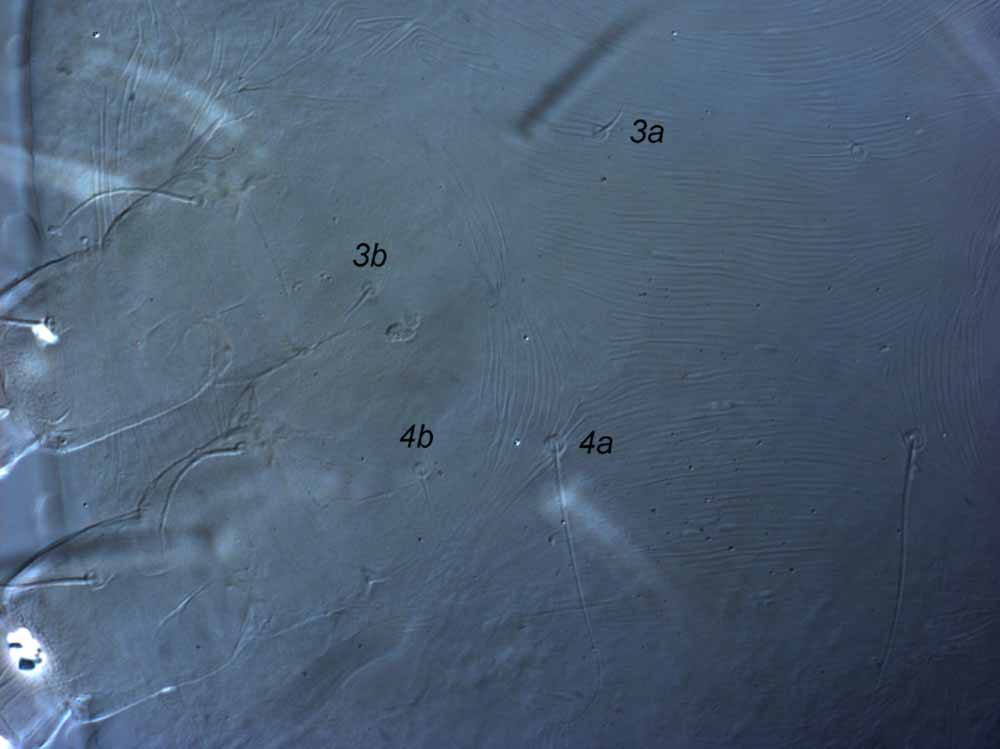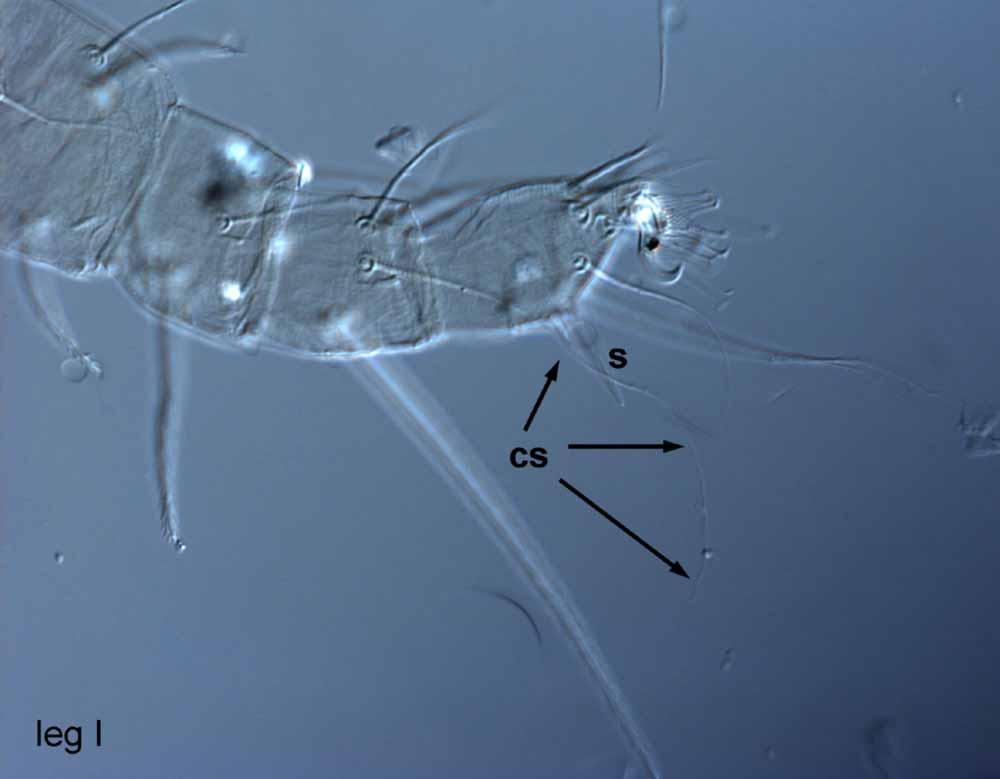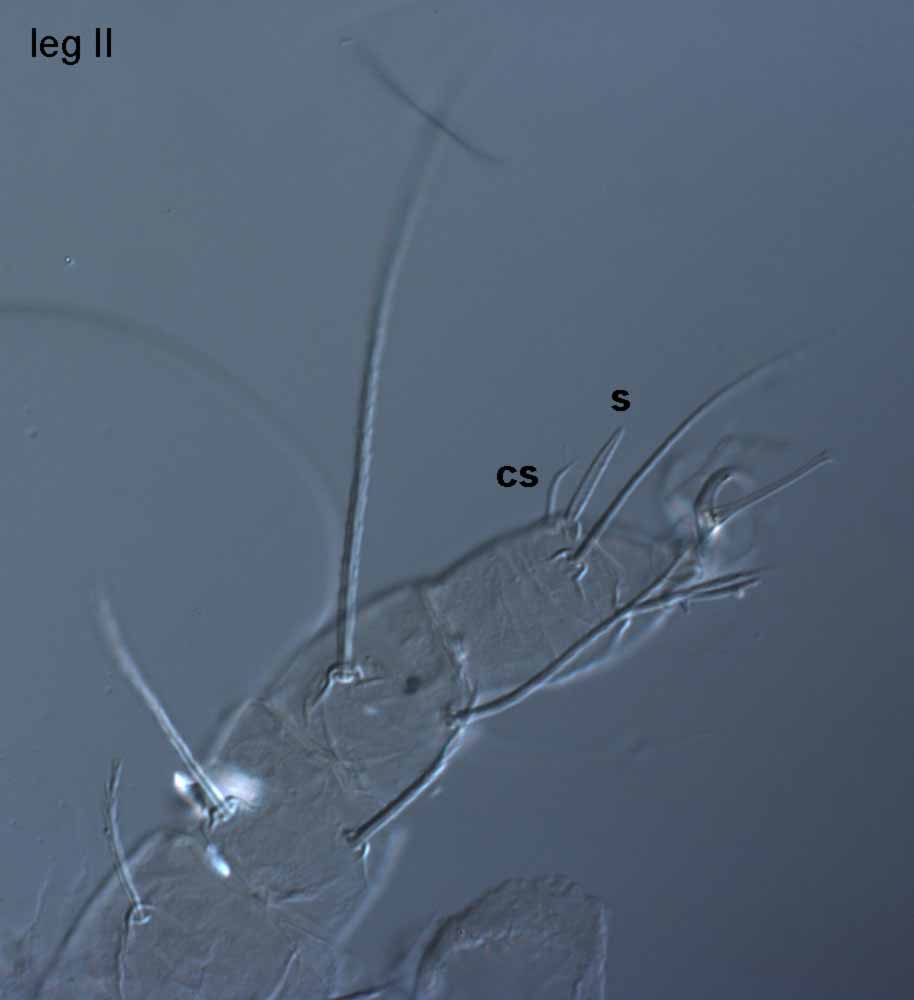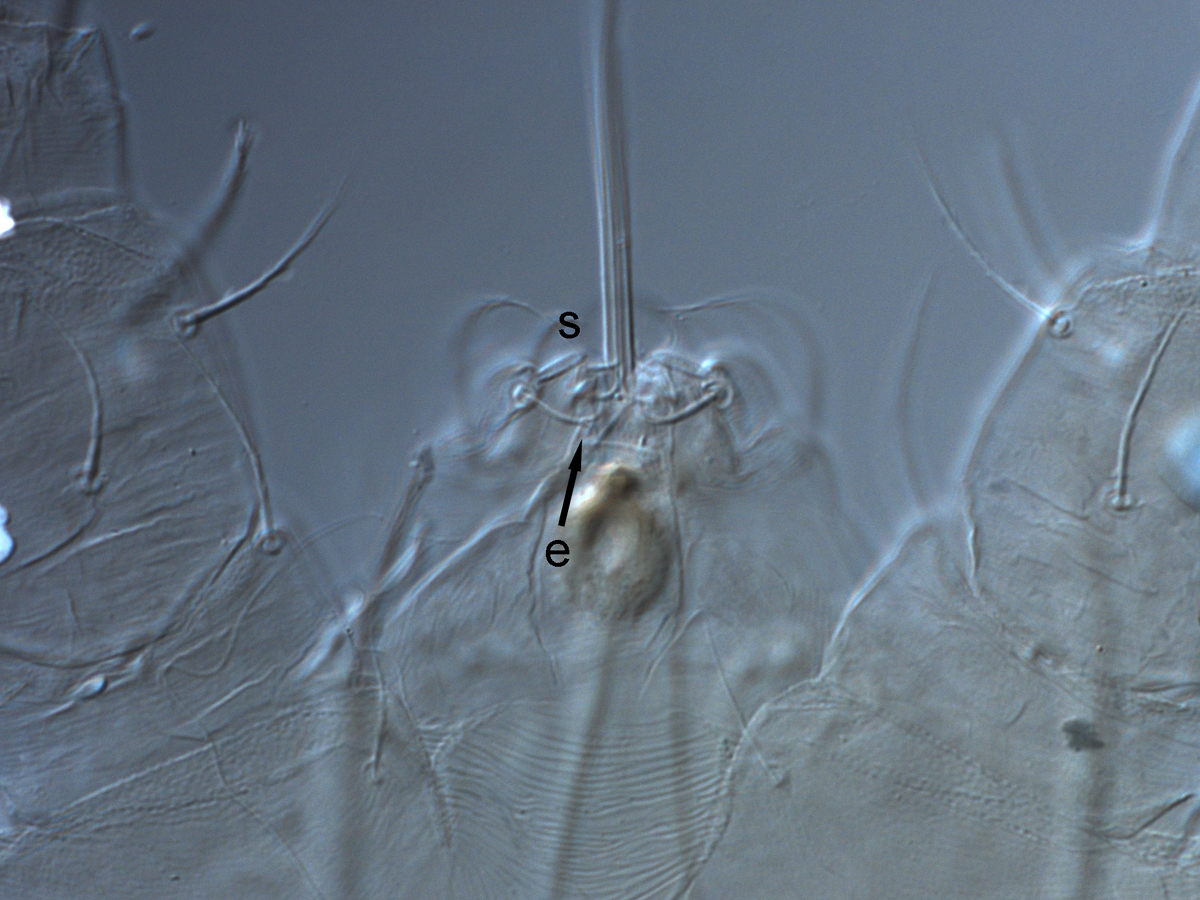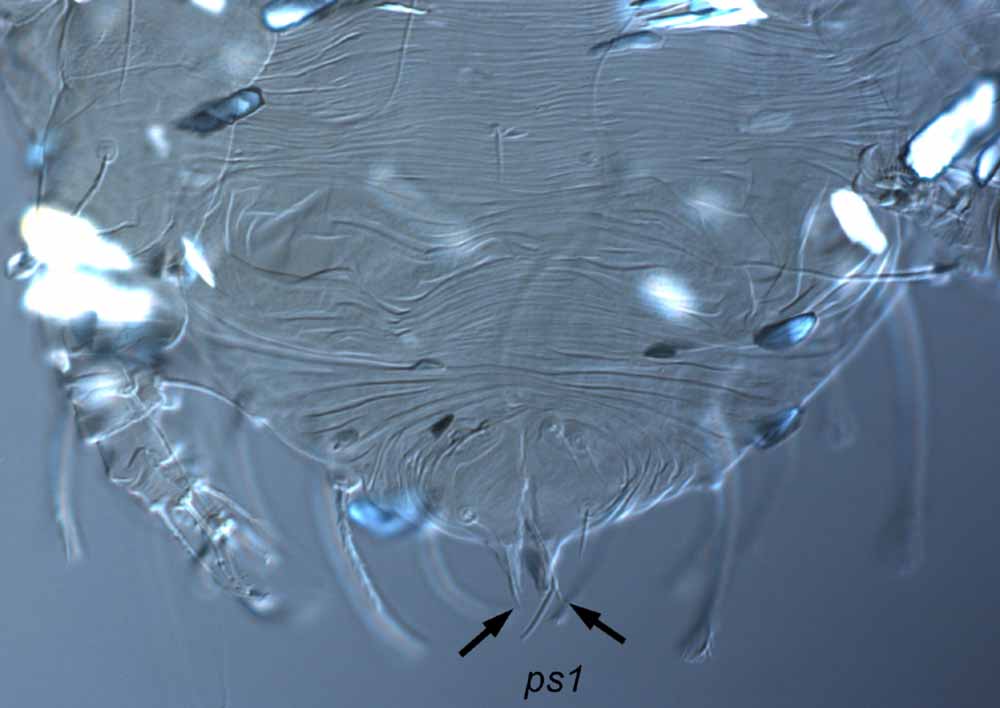Raoiella argenta
|
Fig. 1. Raoiella argenta female lateral dorsum. |
|
Fig. 2. Raoiella argenta female posterior dorsum. |
|
Fig. 3. Raoiella argenta female dorsum. |
|
Fig. 4. Raoiella argenta female venter - coxae III and IV. |
|
Fig. 5. Raoiella argenta female leg I (s = solenidion; cs = companion seta). |
|
Fig. 6. Raoiella argenta female leg II (s = solenidion; cs = companion seta). |
|
Fig. 7. Raoiella argenta female palps (s = solenidion, e = eupathidium). |
|
Fig. 8. Raoiella argenta female posterior venter indicating setae ps1-2 (g = genital setae; ag = aggenital setae). |
|
Fig. 9. Raoiella argenta male posterior dorsum indicating ps1 setae. |
Authority
Beard
Key characters
- setae c1, d1, e1 spatulate (Fig. 1)
- seta h1 subequal in length to h2 (Fig. 2)
- seta h2 weakly spatulate (can appear blunt)
- seta f2 longer than f3 (f2 inserted posterolaterally) (Figs. 2, 3)
- coxae III-IV with one seta (3b, 4b) (Fig. 4)
- femur II with 4 setae (d, l', bv", v')
- genua I-II with 3 setae (d, l', l")
- tarsus I with companion seta obviously longer than solenidion (Fig. 5)
- tarsus II with companion seta obviously shorter than solenidion (Fig. 6)
- dorsal setae on tibiae I-II setiform, tapered
- palp tibiotarsus with one solenidion and one tapered, setiform eupathidium with forked tip distally (Fig. 7) (can be difficult to see), and one seta dorsally
- setae ps1 and ps2 inserted adjacent to each other (Fig. 8)
- male with short ps1 setae, 7-9 microns (Fig. 9)
- male femur II and genua I-II same as female
- larva unknown
Similar species
Raoiella argenta is similar morphologically to Raoiella shimpana.
Raoiella argenta: opisthosomal setae f2 62-68; setae d on femora I, tibiae I and setae l' on tibia I with tapered tips; palp eupathidium forked distally.
Raoiella shimpana: opisthosomal setae f2 76-81; setae d on femora I, tibiae I and setae l' on tibia I with broad blunt tips; palp eupathidium tapered, not forked distally.
Distribution
Australia (QLD)
Hosts
Silver-leaved ironbark, Eucalyptus melanophloia (Myrtaceae)
Remarks
This species is placed in the macfarlanei species group proposed by Beard et al. (2018).
References
Beard et al. (2018)

